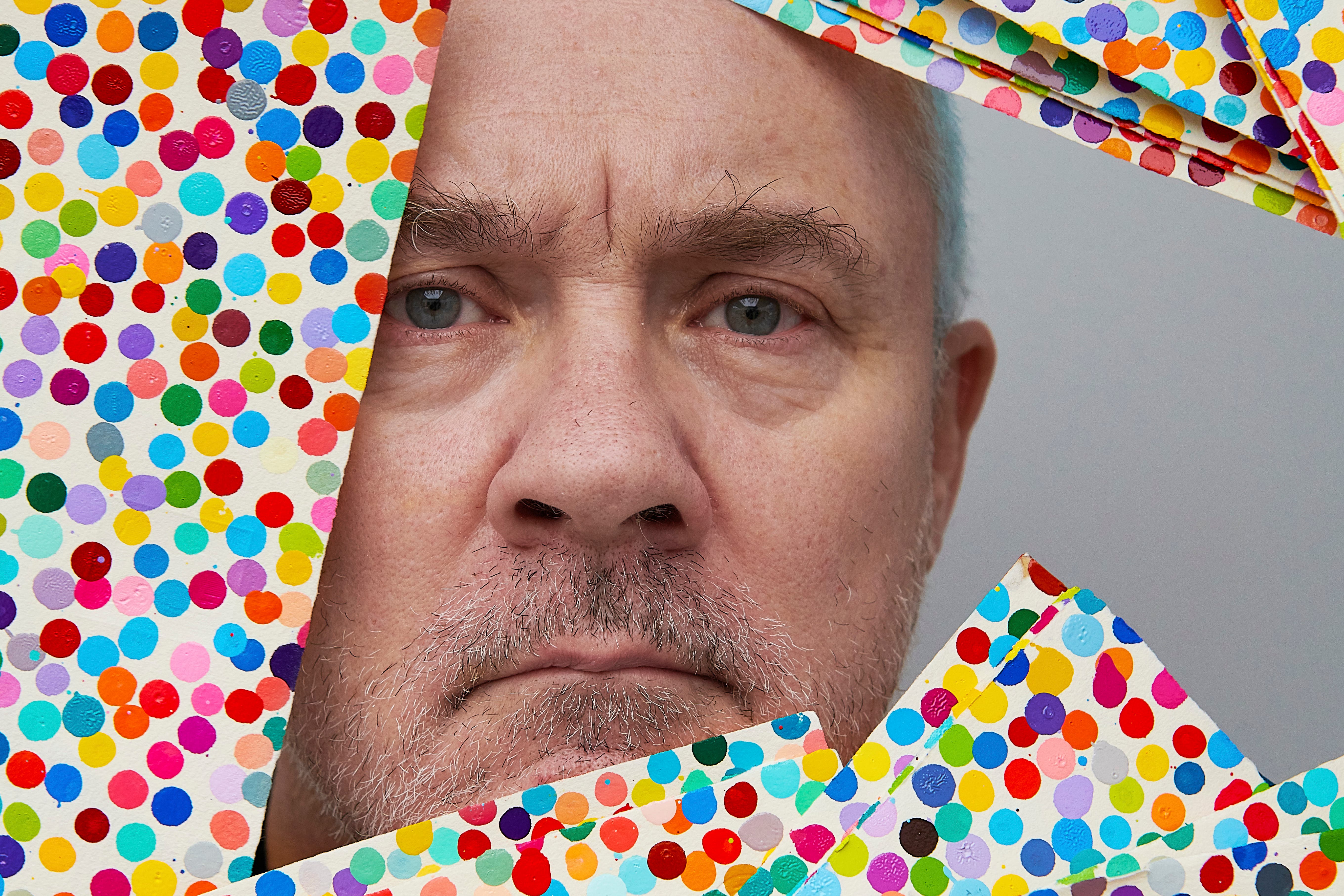Damien Hirst on new exhibition: I am not burning my art, I am transforming it
The British artist has begun the next stage of The Currency exhibition which will see him destroy some of his artworks in contained fires.

Your support helps us to tell the story
From reproductive rights to climate change to Big Tech, The Independent is on the ground when the story is developing. Whether it's investigating the financials of Elon Musk's pro-Trump PAC or producing our latest documentary, 'The A Word', which shines a light on the American women fighting for reproductive rights, we know how important it is to parse out the facts from the messaging.
At such a critical moment in US history, we need reporters on the ground. Your donation allows us to keep sending journalists to speak to both sides of the story.
The Independent is trusted by Americans across the entire political spectrum. And unlike many other quality news outlets, we choose not to lock Americans out of our reporting and analysis with paywalls. We believe quality journalism should be available to everyone, paid for by those who can afford it.
Your support makes all the difference.Damien Hirst has said he is not burning his art but “transforming it”, as he began setting fire to thousands of his creations as part of a new exhibition.
The British artist, 57, has begun the next stage of his The Currency exhibition in south London which will see him destroy a collection of his classic polka dot-style artworks in contained fires.
The project first began in July 2021 with 10,000 original pieces accompanied by NFTs and collectors given the option of keeping either the digital or the physical artwork.
More than half of the collectors, 5,149, decided to keep the physical artwork while 4,851 opted for the NFT.
Over the course of the exhibition held at Newport Street Gallery, all of the 4,851 physical artworks will be burned at a specified time each day until the event ends on October 30.
Speaking at the exhibition while burning his artwork, Hirst told the PA news agency: “I’ve never know really what the message is and I think as an artist you’re asking a question disguised as an answer.”
He added that sometimes people assumed to know what he was trying to convey but he felt the process for him was “all about finding out what happens next”.
The artist was dressed in silver metallic boiler-suit trousers and matching fire safety gloves as he collected each piece and burned it in a contained fire box.
Hirst admitted that it felt “better than he expected” to be burning the work, adding: “I think the idea I was worried about it but I think the reality of it is that it’s more transformational. It feels like the NFTs are sort of being (made) permanently as NFTs.
“I’m kind of rooted in the physical art world and I find the digital art world more challenging but I think this has to be part of the process to create truly digital artworks is to destroy the physical artworks as the two can’t exist at the same time.”
He added that he did not see it as a waste as he felt “I’m not burning my art I’m transforming it into NFTs”.
Reflecting on the future of digital artwork, he said: “I think they’re just an important part of our world, NFTs, of course people, some people, are going to think these are a waste of materials but some people think other people are a waste of space.”
An NFT or non-fungible token is a digital certification of authenticity and ownership that is stored on a system similar to those used for cryptocurrencies.
The artworks were created by hand in 2016 using enamel paint on handmade paper with no colour repeated twice on one piece.
The titles of the artworks were also generated through a machine which learned some of the artist’s favourite song lyrics.
To ensure authenticity, each artwork is numbered, titled, stamped and signed by the artist on the back with a watermark and hologram containing a portrait of the artist also etched into the paper.
Before Hirst burned each artwork, he showed it to a camera to log its unique code to keep track of every piece that had been burnt.
He is said to view The Currency exhibition as a work of art in which people participate by buying, holding, selling and exchanging the artworks.
The Bristol-born, Leeds-raised artist came to attention in 1988 when he was a student at Goldsmiths, University of London, where he conceived and curated the group exhibition Freeze.
Damien Hirst: The Currency with HENI runs until October 30 at the Newport Street Gallery in London.